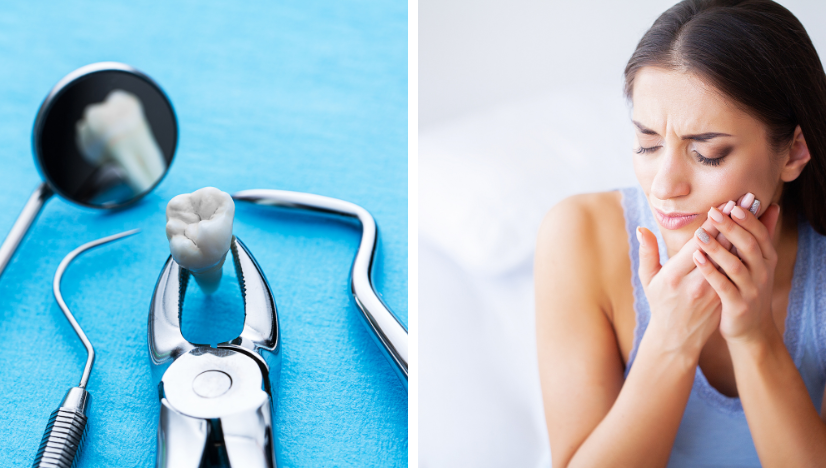When Pain Strikes: Your Go-To Guide for Emergency Tooth Extraction

Pain in your mouth can feel like a mini-crisis, leaving you searching for answers and relief. Whether it’s a throbbing ache or an unexpected injury, understanding when you need an emergency tooth extraction can help you navigate these uncomfortable situations. In this guide, we’ll break down everything you need to know about emergency tooth extraction, from recognizing the signs to recovery tips that make your life easier.
What Is Emergency Tooth Extraction?
So, what exactly is emergency tooth extraction? Simply put, it’s the removal of a tooth that has become problematic and needs immediate attention. This could stem from a variety of issues, including:
- Severe Tooth Decay: When cavities become too extensive, they can cause significant pain and infection, leading to the need for extraction.
- Infection or Abscess: An infection can spread to the surrounding tissue, creating pressure and pain that requires urgent removal.
- Trauma: Accidents happen! Whether from a sports injury or a fall, a damaged tooth may need to be extracted quickly to prevent further issues.
- Impacted Wisdom Teeth: These tricky little teeth can grow at odd angles and lead to pain, swelling, and even infection, making extraction necessary.
If you’re experiencing any of these issues, it’s time to seek help from a dental professional.
Signs You Need an Emergency Tooth Extraction
So, how do you know if you need an emergency tooth extraction? Here are some signs to look out for:
- Intense Pain: If you’re feeling a level of pain that’s stopping you in your tracks, it’s time to call the dentist. Pain that doesn’t let up or gets worse is a significant sign something’s up.
- Swelling: Notice any swelling in your gums or face? That can indicate an infection or abscess. Don’t ignore it!
- Difficulty Eating: If chewing is painful or impossible, your tooth might be to blame. An emergency extraction can relieve discomfort and get you back to enjoying your favorite snacks.
- Fever or Bad Taste: A fever could indicate an infection, while a bad taste in your mouth can signal that something’s gone seriously wrong. Both are red flags!
- Visible Damage: If your tooth is cracked, broken, or has fallen out, you need to act fast. Emergency tooth extraction can prevent further complications.
Recognizing these signs early can help you manage pain and get the treatment you need before things escalate.
The Tooth Extraction Process
If you’ve identified that you need an emergency tooth extraction, here’s what you can expect during the process:
1. Consultation: Your dentist will first examine your mouth and take X-rays to understand the situation better. This step helps determine the best approach to extraction.
2. Anesthesia: To keep you comfortable, your dentist will use a local anesthetic to numb the area around the tooth. If you’re feeling extra anxious, they might even offer sedation options.
3. Extraction: Once you’re numb and comfortable, the dentist will gently loosen the tooth from its socket using specialized tools. If it’s an impacted tooth, they may need to remove some bone or gum tissue to get it out.
4. Aftercare Instructions: After the extraction, your dentist will provide you with aftercare instructions. These tips will be crucial for a smooth recovery.
What to Expect After an Emergency Tooth Extraction?
Recovery after an emergency tooth extraction can feel like a lot, but it’s totally manageable! Here’s what you should keep in mind:
- Bleeding: It’s normal to experience some bleeding right after the extraction. Bite down on gauze pads provided by your dentist for about 30 minutes to help stop the bleeding.
- Swelling and Pain: Expect some swelling and pain in the first couple of days. Over-the-counter pain relievers usually do the trick, but your dentist can prescribe stronger medications if needed.
- Soft Foods: Stick to soft foods for a few days. Think smoothies, mashed potatoes, and yogurt. Your mouth will thank you!
- Follow-Up Care: Make sure to follow up with your dentist as recommended. They’ll check how your mouth is healing and can address any concerns.
Preventing the Need for This Emergency
While some emergencies are unavoidable, there are steps you can take to help prevent the need for an emergency tooth extraction:
- Regular Dental Checkups: Make visits to the dentist part of your routine. Catching issues early can save you from bigger problems down the road. The ADA provides educational resources to help patients understand when it’s necessary to seek emergency dental care.
- Practice Good Oral Hygiene: Brush twice a day, floss regularly, and use mouthwash to keep your teeth and gums healthy.
- Avoid Hard Foods: Crunching on ice or hard candy can lead to cracks and chips. Stay cautious with what you munch on!
- Wear a Mouthguard: If you play sports or grind your teeth at night, a mouthguard can protect your teeth from damage.
- Stay Hydrated: Drinking water can help keep your mouth moist and reduce the chances of cavities.
When to Seek Help?
If you experience severe pain, swelling, or any of the red flags mentioned above, don’t hesitate to reach out for help. A professional can assess your situation and determine if an emergency tooth extraction is necessary. Emergency tooth extraction can sound scary, but understanding the process and knowing what to expect can help alleviate some of that fear. By being proactive about your dental health, you can minimize the chances of needing an emergency extraction and keep your smile shining bright.
If you find yourself facing dental discomfort or think you might need an emergency tooth extraction, talk to your trusted dentist Houston, TX. They’ll help guide you through the process and get you back on track to a pain-free mouth and a confident smile!

